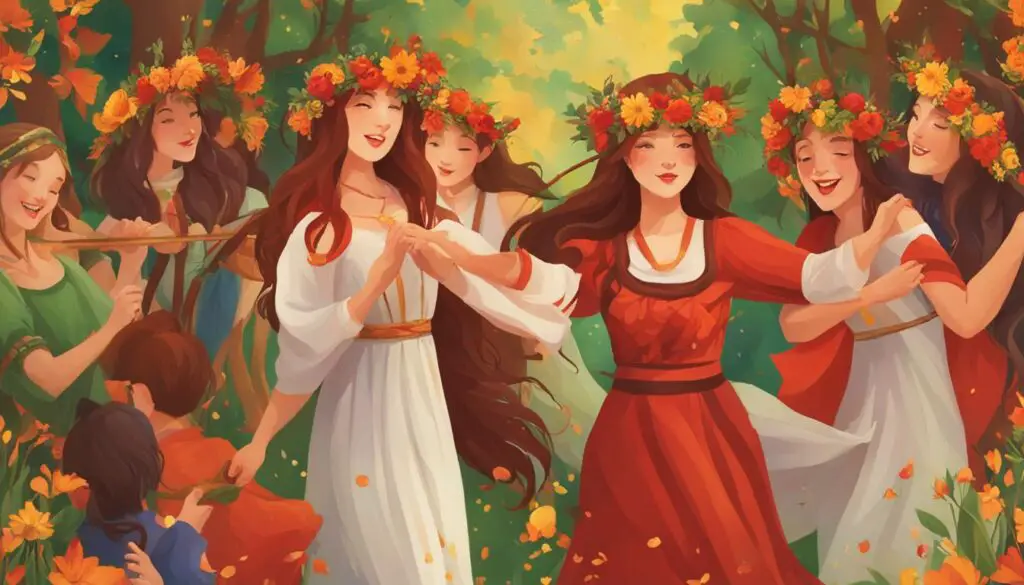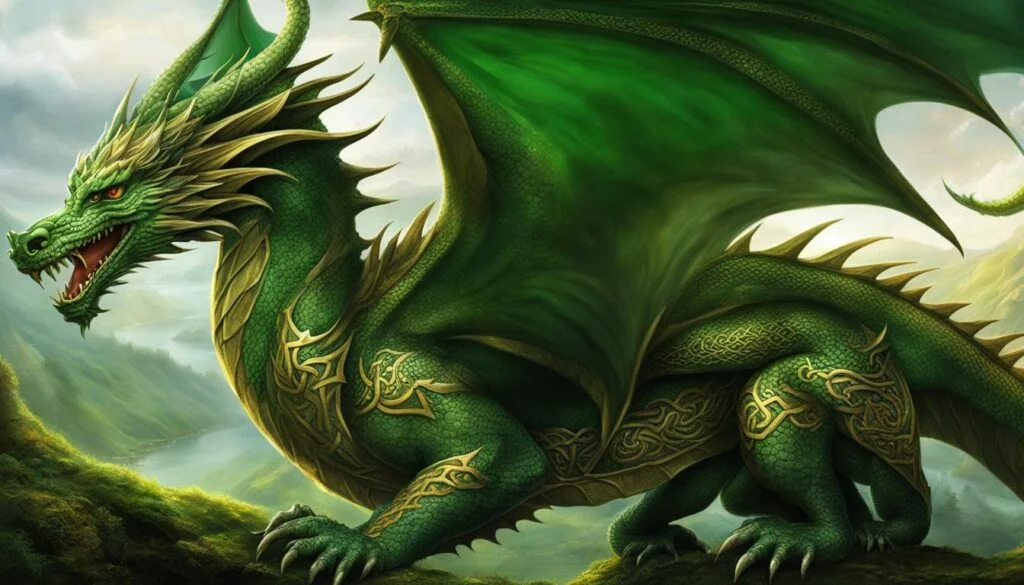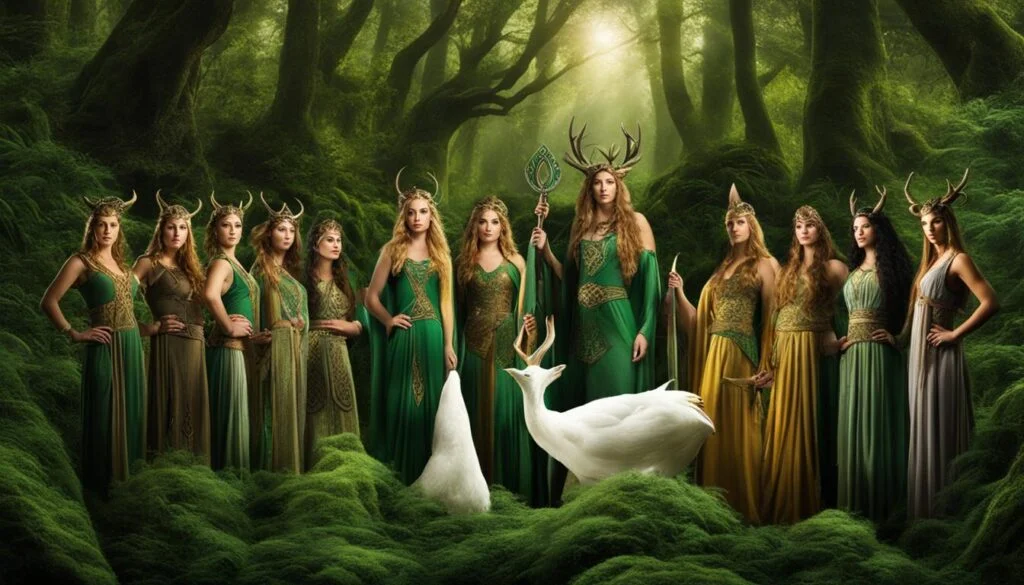Welcome to our article on the Beltane festival! In this piece, we will explore the historical and cultural significance of this ancient Pagan holiday, also known as May Day. Beltane marks the beginning of summer and is celebrated with vibrant traditions and rituals that have deep roots in Celtic and Gaelic traditions.
Key Takeaways:
- The Beltane festival is a Pagan holiday that celebrates the arrival of summer and is deeply rooted in Celtic and Gaelic traditions.
- It is associated with fertility, growth, and the connection to nature.
- The festival is characterized by bonfires, maypole dancing, and various fertility rituals.
- Modern celebrations of Beltane have evolved and adapted to contemporary times.
- Beltane’s influence can be seen in various cultures around the world and has inspired art, literature, and music.
Origins of Beltane: Celtic Traditions
Beltane, a festival steeped in history, traces its roots back to the ancient Celtic traditions of Ireland, Scotland, and the Isle of Man. For the Celtic people, the changing seasons and the cycles of nature held great significance, making Beltane a time to honor the arrival of summer.
As the dark winter months gave way to longer days and warmer weather, the Celtic communities celebrated the return of light and growth. Beltane was marked with various customs and rituals that honored this transition.
One such tradition was the display of fresh greenery, symbolizing the vitality and renewal of the natural world. People would adorn their homes and communities with vibrant foliage, welcoming the arrival of spring with open arms.
Another important aspect of Beltane was the baking of Beltane bannocks, a type of oatcake. These bannocks were often prepared with regional variations and served as a special treat during the festivities.
The lighting of Beltane fires on May 1st was a central element of the festival. These fires represented the growing power of the sun and marked a time of purification and renewal within the community.
The Celtic people believed that the smoke and ashes of the Beltane fires held protective powers, warding off harm and evil spirits. It was a time for people to come together, gather around the fires, and participate in joyous celebrations.
Beltane, with its deep Celtic traditions, symbolized the interconnectedness between humans and nature. The festival served as a reminder of the cyclical nature of life and the importance of celebrating the cycles of growth and abundance.
Beltane Fires: Symbolism and Practice
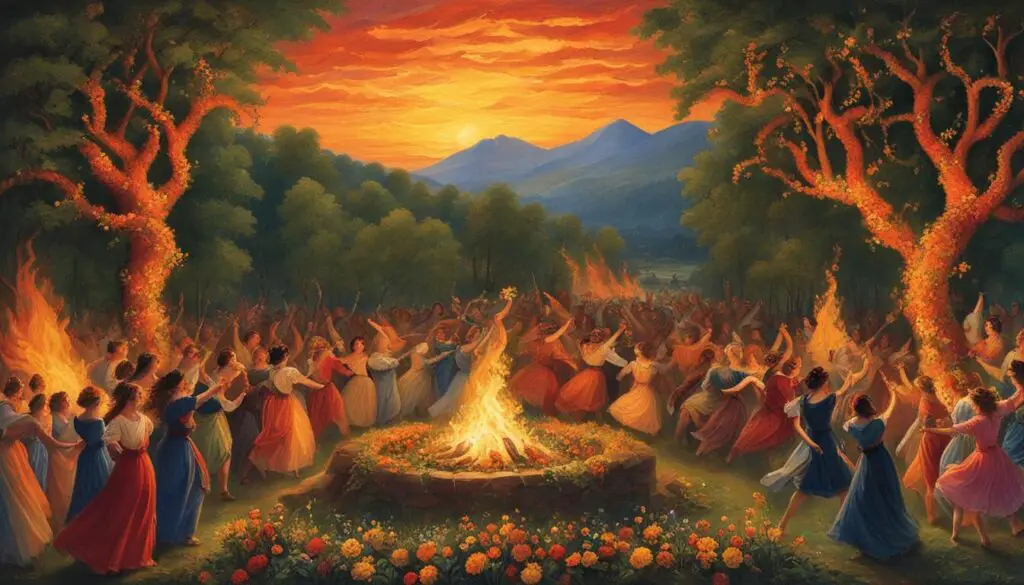
The Beltane festival is renowned for its vibrant traditions, and one of the most significant elements is the lighting of Beltane fires. Primarily practiced in Scotland, these fires hold deep symbolic meaning and play a crucial role in the festivities.
The Beltane fires are symbolic of warmth, light, and purification. In ancient times, it was believed that the smoke and ashes from these fires possessed protective powers, capable of warding off harm and evil spirits. People would gather around the fires, engendering a sense of community and kinship, while participating in various rituals and practices.
One such ritual involved driving cattle through the Beltane fires, as it was believed to purify them and ensure their well-being throughout the year. This practice also symbolized the transition from winter to summer and the renewal of life. Additionally, individuals would engage in dancing and even leaping over the flames as an act of celebration and personal renewal.
Over time, the lighting of Beltane fires declined during the 19th century. However, in the 20th century, the Beltane Fire Society in Edinburgh revived this ancient tradition, reigniting the flames of the festival. Today, modern Beltane celebrations often include the lighting of bonfires to pay homage to this ancient custom and its profound symbolism.
To honor the beltane fire tradition, we have an image of a mesmerizing bonfire at a Beltane celebration:
Witnessing the crackling flames and basking in their warm glow, participants are reminded of the festival’s deep-rooted connection to the cycles of nature, purification, and the celebration of life. The Beltane fires continue to captivate the hearts and minds of those who gather to partake in this centuries-old tradition.
Evolution of Beltane: Modern Celebrations
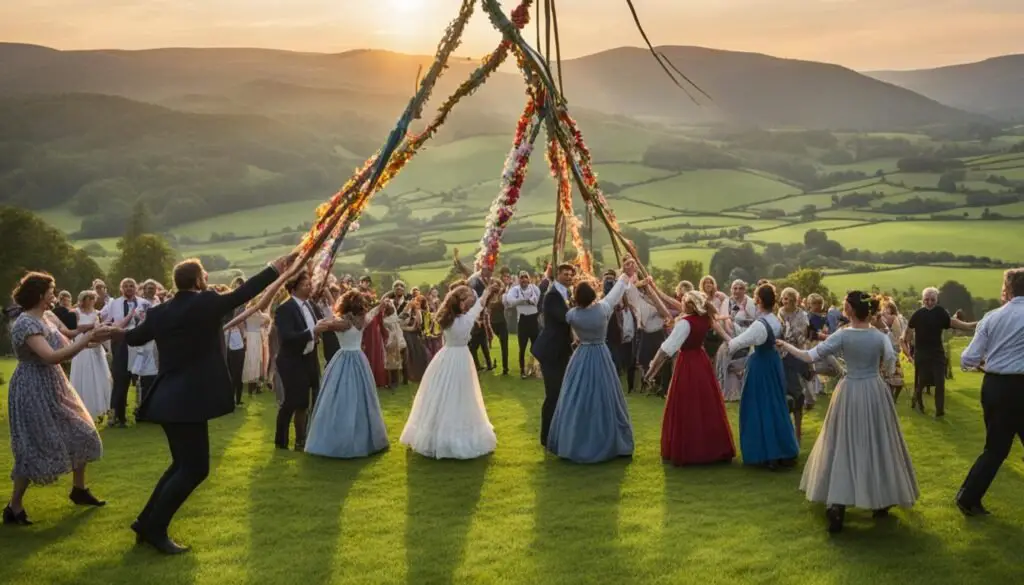
As the Beltane festival has progressed through time, it has embraced the currents of modernity while preserving its core traditions. In the late 20th century, the Beltane Fire Society in Edinburgh orchestrated the first contemporary Beltane celebration, merging age-old folk customs with a contemporary spectacle.
The event’s popularity has soared, with a growing number of performers and enthusiastic audience members. It has transcended the confines of May 1st and expanded to include various performance groups and alternative celebrations affiliated with Beltane. One such celebration, Samhuinn, marks the arrival of winter and takes place on October 31st.
Despite these adaptations, the essence of Beltane remains intact. Integral elements such as the May Queen, the Green Man, and the bonfire persist as central components of the festival, reaffirming its deep-rooted significance.
Beltane Fire Society: The Vanguard of Modern Beltane
- The Beltane Fire Society in Edinburgh organized the first modern Beltane celebration.
- It draws inspiration from existing folk traditions and creates a contemporary spectacle.
- The festival has gained popularity over the years, attracting an increasing number of performers and audience members.
- It has expanded to include performance groups and alternate celebrations associated with Beltane.
- One notable alternate celebration is Samhuinn, which marks the coming of winter on October 31st.
Beltane as a Pagan Holiday: Fertility and Nature Worship
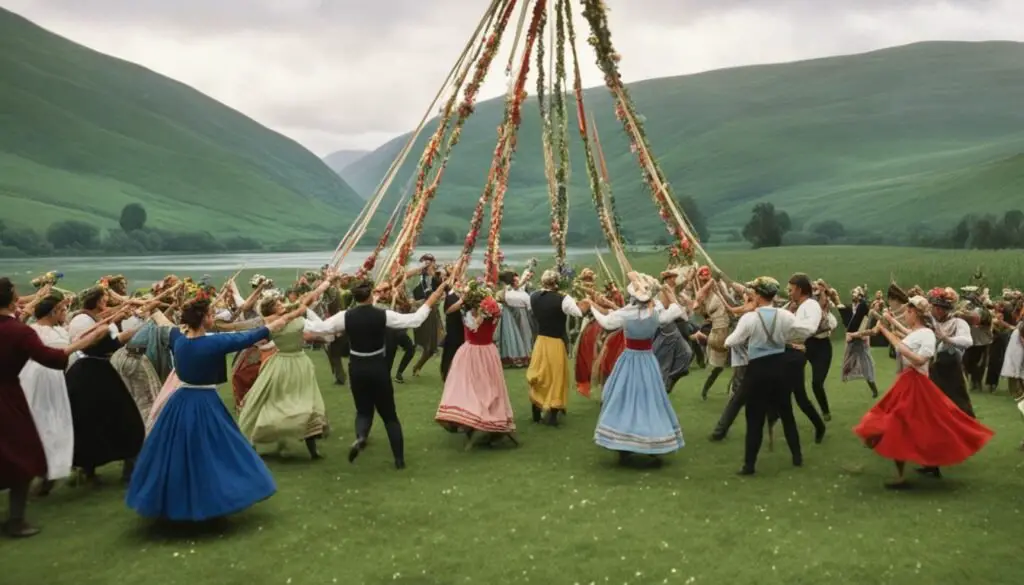
Beltane is celebrated not only as a historical and cultural festival but also as a significant Pagan holiday. Within Celtic neopaganism and Wicca, Beltane holds particular importance, embodying the celebration of fertility and the worship of nature.
Modern Pagans partake in various rituals during Beltane, including the symbolic act of maypole dancing. Ribbons are intricately woven around a pole, representing the harmonious union of masculine and feminine energies. This vibrant dance serves as a visual metaphor for the fertility and growth that Beltane signifies.
Another common Beltane ritual involves participants adorning themselves with floral wreaths, symbolizing the vibrant beauty of nature in full bloom. These wreaths serve as a testament to the abundance and interconnectedness of all living beings. Lighting bonfires is yet another integral aspect of Beltane celebrations, signifying the transformative energy and vitality associated with the season.
During Beltane, Pagan communities often engage in fertility ceremonies, honoring the life-giving forces of nature. These ceremonies are rooted in the belief that Beltane is a time of great abundance and growth, a season when new life emerges and flourishes.
In essence, Beltane as a Pagan holiday embraces the profound connection between human beings and the natural world. It encourages individuals to celebrate the cycles of life, experience the joy of renewal, and recognize their place within the intricate web of existence.
Beltane Festivals Around the World
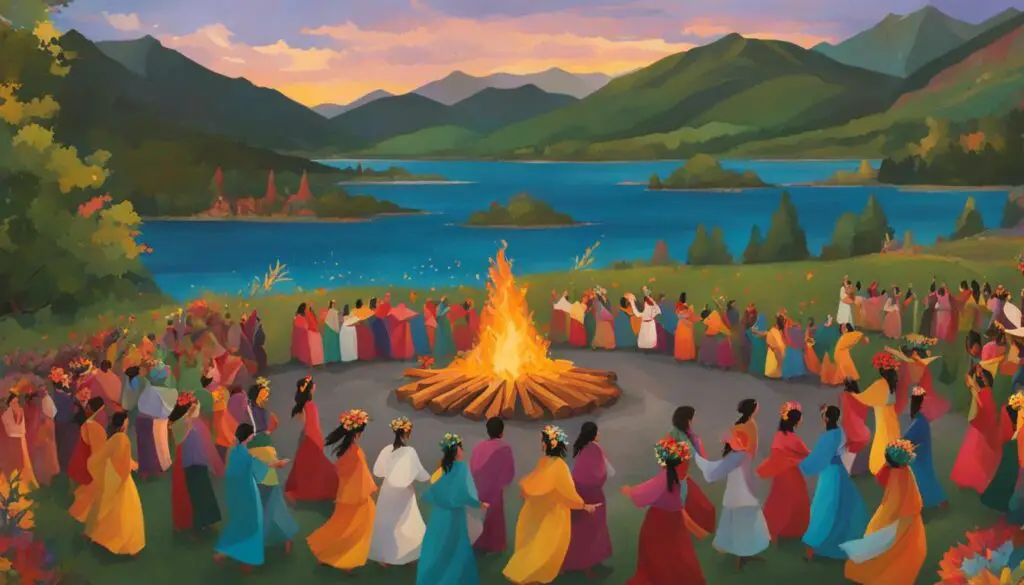
While Beltane is most closely associated with Celtic and Gaelic cultures, celebrations of the festival can be found around the world. In many countries, variations of Beltane traditions are practiced, often with their own unique customs and rituals.
In the United States, Beltane festivals are held in various Pagan and Wiccan communities, with participants engaging in activities such as bonfires, maypole dancing, and nature-centered rituals. These festivals provide an opportunity for individuals to come together, celebrate the arrival of spring, and connect with the natural world.
Other countries, such as Germany, Sweden, and Finland, have their own May Day celebrations that share similar themes with Beltane. These celebrations often involve dancing around maypoles, wearing floral wreaths, and embracing the beauty of nature.
Beltane Festivals in the United States
- Beltane festivals are celebrated in various Pagan and Wiccan communities across the United States.
- Participants engage in activities such as bonfires, maypole dancing, and nature-centered rituals.
- These festivals provide an opportunity for individuals to come together, celebrate the arrival of spring, and connect with the natural world.
Beltane Celebrations in Germany, Sweden, and Finland
- Germany, Sweden, and Finland have their own May Day celebrations that share similar themes with Beltane.
- These celebrations often involve dancing around maypoles, wearing floral wreaths, and embracing the beauty of nature.
- May Day traditions vary across these countries but all celebrate the arrival of spring and the renewal of life.
Beltane’s Influence on Contemporary Culture
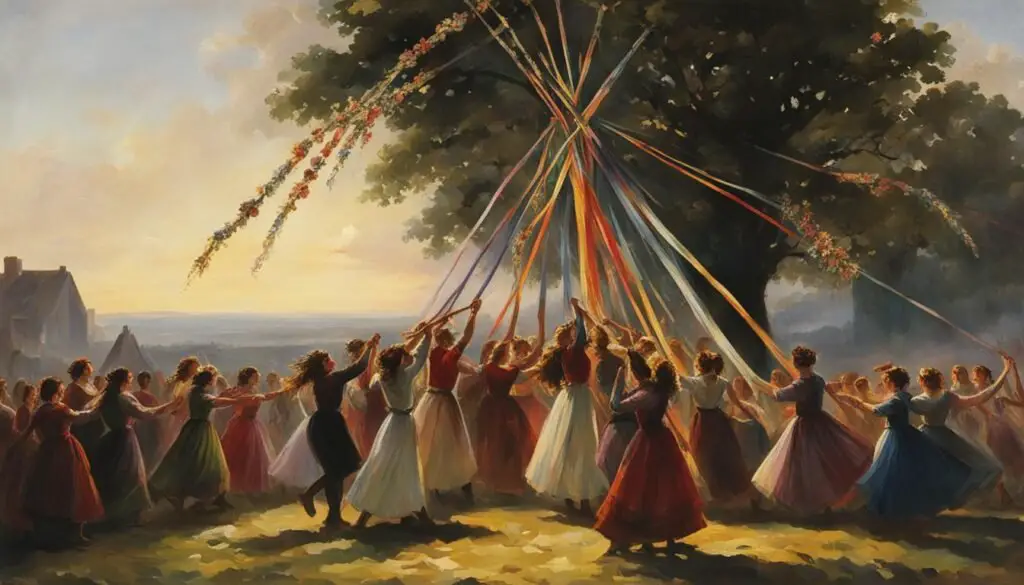
The Beltane festival and its associated traditions have had a significant influence on contemporary culture. Elements of Beltane, such as maypole dancing and the symbolism of the Green Man, can be found in various folk festivals and community celebrations around the world.
The festival’s emphasis on fertility, connection to nature, and the cyclical nature of the seasons resonates with many people who seek to reconnect with the earth and honor ancient traditions. Beltane’s joyful celebration of life’s cycles and the abundance of nature inspires individuals and communities to embrace their connection to the natural world.
Works of art, literature, and music have been influenced by Beltane, further spreading its cultural significance. Artists, writers, and musicians often draw inspiration from Beltane’s themes of fertility, growth, and the interplay between humans and the natural world. This artistic expression helps to preserve the festival’s traditions and keeps them alive in contemporary society.
One can find Beltane’s influence in various forms of creative expression, from paintings and sculptures depicting Beltane rituals to poems and novels exploring the symbolism and meaning behind the festival. Musicians have composed songs and music inspired by Beltane, capturing the spirit of celebration and connection.
Additionally, Beltane festivals and events provide opportunities for people to come together, fostering a sense of community and shared experience. These gatherings often feature live performances, interactive rituals, and workshops that allow individuals to connect with each other and the natural world.
The influence of Beltane extends beyond specific celebrations and encompass a broader cultural shift towards reconnecting with nature, honoring ancient traditions, and embracing the cycles of life. People around the world are inspired by Beltane’s message of harmony with nature, unity, and celebration, as they strive to find meaning and purpose in contemporary society.
Beltane in Mythology and Folklore

Beltane, the ancient Pagan festival, is deeply interconnected with mythology and folklore, carrying with it a tapestry of stories and beliefs that have been passed down through generations. In Irish mythology, Beltane is closely associated with significant events and rituals, including the protection of cattle and crops, and the appeasing of supernatural beings. It is believed that during Beltane, the boundary between the human and natural realms is blurred, allowing for a profound intertwining of these realms.
The mythology surrounding Beltane often revolves around themes of fertility, growth, and the vibrant abundance of life. It is a celebration of the earth’s awakening and the renewal of nature’s vitality. Through captivating stories and legends, Beltane embodies the essence of the human-nature connection, emphasizing the profound relationship between humanity and the natural world.
Folklore and legends related to Beltane can be found in various cultures, each with its own unique interpretations and traditions. These tales contribute to the rich cultural significance of the festival, highlighting its enduring impact on communities around the world.
One such story tells of the May Queen, a powerful figure who represents the radiant energy of spring and the fertility of the land. The May Queen, often portrayed wearing a crown of flowers, reigns over the festivities and symbolizes the blossoming of life as the seasons change.
Another popular mythical character associated with Beltane is the Green Man, a symbol of rebirth and the spirit of the forest. Often depicted with leaves and branches growing out of his face, the Green Man represents the vibrant cycle of growth and decay in nature, playing a significant role in the festival’s folklore.
These captivating stories and beliefs surrounding Beltane invite us to reflect on our connection to the land, the seasons, and the inherent cycles of life. As we embrace the mythology and folklore of Beltane, we deepen our understanding of the festival’s cultural significance and its enduring presence in the hearts and minds of those who celebrate it.
Beltane as a Time of Community and Connection
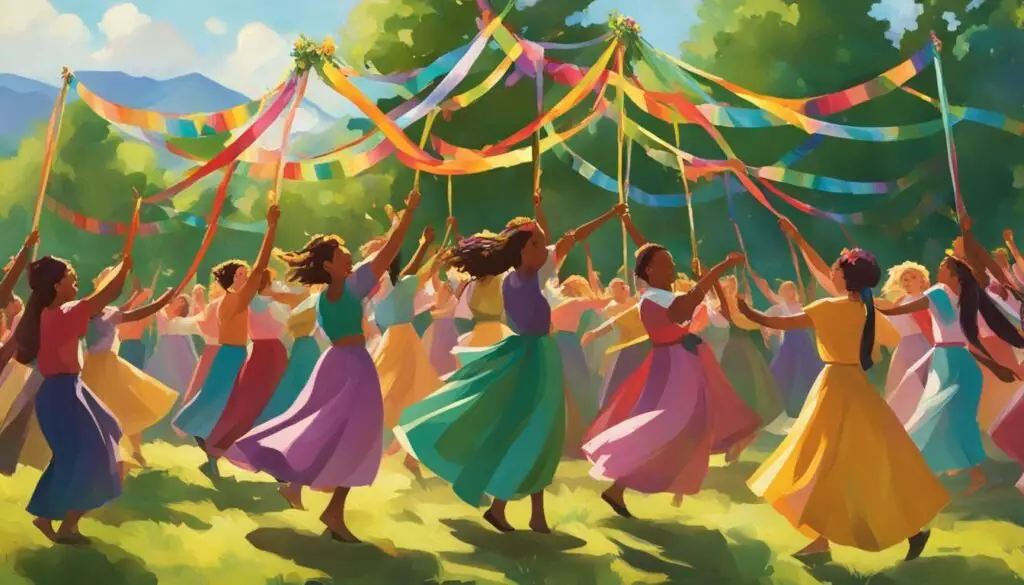
Beltane has always been a time of community and connection, bringing people together to celebrate the turning of the seasons and the abundance of life. The festival provides an opportunity for people to come together, participate in rituals and traditions, and strengthen bonds with one another and with nature.
Beltane fosters a sense of belonging and unity, reminding us of our interconnectedness and the importance of celebrating life’s cycles and milestones. It is a time to rejoice, express gratitude, and embrace the joy and vitality of the natural world.
Conclusion
The Beltane festival is a celebration of spring, fertility, and the renewal of life. With its deep historical and cultural roots, it holds immense significance in Celtic and Gaelic traditions. Over time, the festival has evolved and adapted to the changing social and cultural landscape, but it has remained true to its core themes of community, connection to nature, and celebration of life’s cycles.
Whether observed in ancient Celtic traditions or as a modern Pagan holiday, Beltane continues to inspire and resonate with people worldwide. It serves as a reminder of the interwoven tapestry of humanity and the natural world, symbolizing the vitality and abundance that spring brings. Through rituals, such as the lighting of Beltane fires and maypole dancing, individuals come together to honor the changing seasons and foster a sense of community and belonging.
The significance of Beltane extends beyond its historical and cultural origins. It has influenced contemporary culture, inspiring various folk festivals, artistic creations, and community celebrations. Beltane’s emphasis on fertility, connection to nature, and the cyclical nature of life resonates with those seeking to reconnect with the Earth and honor ancient traditions.
As we celebrate the Beltane festival, we are reminded of the importance of cherishing the natural world and coming together as a community. Beltane serves as a joyful and vibrant reminder of the vitality and interconnectedness of all living beings. It offers a moment to express gratitude for the cycles of life and celebrate the arrival of spring’s abundance. The Beltane festival continues to be an enduring and cherished tradition, enriching our lives and fostering a deeper connection with both one another and the world around us.
FAQ
What is the historical and cultural significance of the Beltane festival?
The Beltane festival is a Pagan holiday that marks the beginning of summer and is associated with fertility and the arrival of spring. It has deep historical and cultural roots in Celtic and Gaelic traditions and is celebrated with various rituals and traditions.
What are the origins of Beltane?
Beltane originated in Celtic traditions, particularly in Ireland, Scotland, and the Isle of Man. It was a time to celebrate the return of light and growth after the dark winter months, marking the beginning of summer. The festival was associated with various practices, including the display of fresh greenery and the lighting of Beltane fires.
What is the symbolism and practice of Beltane fires?
Beltane fires were a central element of the festival, symbolizing the growing power of the sun and providing an opportunity for purification and renewal within the community. The fires were believed to have protective powers and could ward off harm and evil spirits. People would gather around the fires, drive cattle through them for purification, and participate in dancing and leaping over the flames.
How has the Beltane festival evolved over time?
The Beltane festival has evolved and adapted to modern times, with the creation of modern celebrations and the incorporation of existing folk traditions. The festival now includes performances, alternate celebrations, and expanded dates beyond May 1st. However, the core elements of Beltane, such as the May Queen, the Green Man, and the bonfire, have remained central.
How is Beltane celebrated as a Pagan holiday?
Beltane is celebrated as a Pagan holiday, particularly in Celtic neopaganism and Wicca. It is associated with fertility rituals and the worship of nature. Modern Pagans participate in rituals such as maypole dancing, wearing floral wreaths, lighting bonfires, and performing fertility ceremonies to honor the vitality and interconnectedness of all living beings and the Earth.
Are there Beltane festivals celebrated around the world?
Yes, Beltane festivals are celebrated in various countries with their own unique customs and rituals. In the United States, Beltane festivals are held in Pagan and Wiccan communities. Other countries like Germany, Sweden, and Finland also have their own May Day celebrations that share similar themes of spring’s arrival and the celebration of nature.
Has Beltane had an influence on contemporary culture?
Yes, elements of Beltane such as maypole dancing and the symbolism of the Green Man can be found in various folk festivals and community celebrations around the world. The festival’s emphasis on fertility, connection to nature, and the cyclical nature of the seasons has inspired works of art, literature, and music, further spreading its cultural significance.
What is Beltane’s significance in mythology and folklore?
Beltane is deeply rooted in mythology and folklore, particularly in Irish mythology. It is associated with events and rituals such as the protection of cattle and crops and the appeasing of supernatural beings. Folklore and legends surrounding Beltane can be found in various cultures, contributing to the rich cultural significance of the festival.
What is the significance of Beltane as a time of community and connection?
Beltane has always been a time of community and connection, bringing people together to celebrate the turning of the seasons and the abundance of life. The festival fosters a sense of belonging and unity, reminding us of our interconnectedness and the importance of celebrating life’s cycles and milestones. It is a time to rejoice, express gratitude, and embrace the joy and vitality of the natural world.


